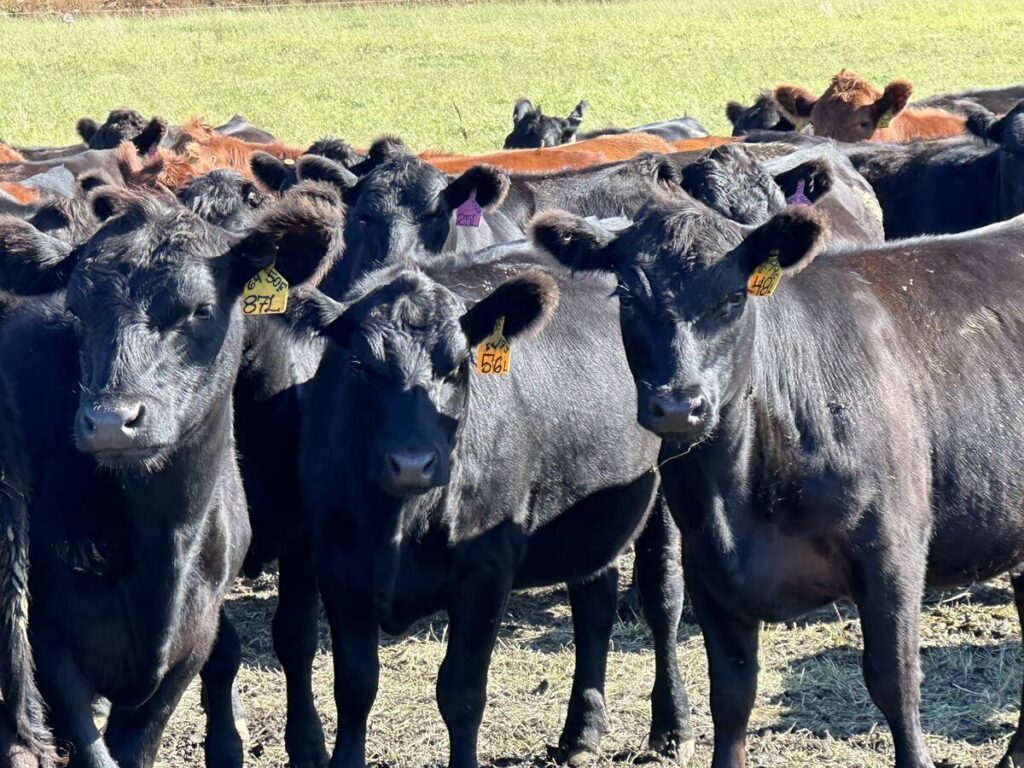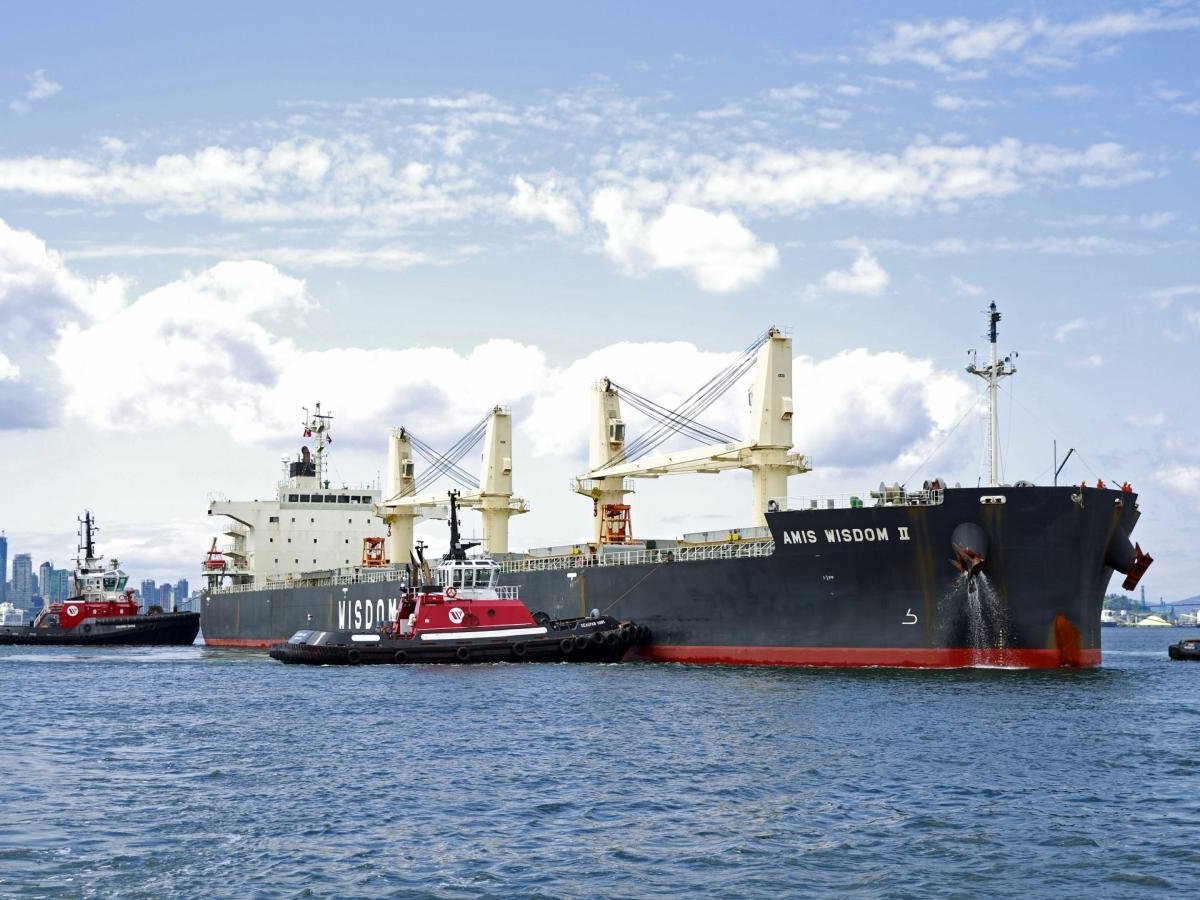Beef farmers find big premiums for replacement heifers

Glacier FarmMedia – If a beef producer from 2022, or even 2023, jumped forward to today, their jaws would probably drop at the sale price of replacement heifers.
Western Canadian auctioneers are selling replacement heifers for north of $3,000 per head — approximately double the prices they were going for three or four years ago.
Eight hundred to 900 pound replacement heifers are currently selling for $3,200 to $3,600 a head, according to Tyler Slawinski, an auctioneer with the Gladstone Auction Market in western Manitoba.
Read Also


Canola sector awaits Chinese anti-dumping investigation
The U.S. Department of Agriculture is forecasting robust Canadian canola exports in 2025-26 despite the potential loss of its top market.
“That’s quite a bit because you’re not going to see a calf for 283 days after whatever the gestation period is for that type of breed — nine months roughly. It’s not like buying a bred animal where you’re going to be that much closer to a return. The turnaround and investment on these open-style heifers is fairly high.”
The continued high feeder market has helped support the value of those heifers and has changed the game in how some producers are marketing cattle.
High replacement heifer costs are par for the course in a market where all cattle categories have skyrocketed, said Slawinski.
“You also have guys saying, ‘well, holy moley, I can get this many dollars for my replacement style heifers that I was going to keep. I’ve got some old cows in the pen that I was going to cull, but if she’s going to give me another couple of calves, I will run her for a couple more years and sell my replacement heifers.’”
Others, meanwhile, are taking advantage of ballooning bred heifer prices to pad their revenue.
Bryan Danard of Calgary Stockyards said any producer who bought replacement heifers last spring, only to return them to the market in fall, after breeding season, “made really good money.”
“What we’re seeing now is that feeder cattle are so high, a lot of guys that normally turn out yearlings on grass, rather than just turning out straight yearlings, (they) are buying replacement heifers to breed and sell into the bred market this fall, just because it worked so well last year,” he said.
“On average, I’d say guys that did that made about 1,000 bucks a head last year. So that’s attracting a lot of guys to do the same this year. So the fact that they’re as high as they are, guys still seem very willing to pay it.”
Trevor Atchison, who farms outside of Pipestone, Man., was one of the producers taking advantage of that dynamic.
He had been watching bred heifer demand — and prices — grow throughout 2024. As an added incentive, he didn’t have the labour to eventually deliver calves from 70 bred heifers.
In the latter part of the year, he sent those animals to market instead. His extra gross revenue matched Danard’s $1,000 per head estimate.
“I would say we were highly profitable based on what the value of that heifer was when we decided to keep her and breed her and then (also) comparing that to what we sold yearlings for off grass, which were the sisters to the ones we kept to breed,” he said.
Those profits went toward his feeder cattle — a herd he plans to increase as he gradually transitions away from cow-calf and more into a feedlot enterprise.
Whether he’s going to do that again this year depends on how well the market retains its current sky-high values.
“We may breed either more of our own heifers and either this fall we will retain them or we will sell them next coming winter, depending on the market,” he said.
This heifer marketing dynamic takes place against the backdrop of still flagging Canadian cattle numbers. The nation’s cattle herd is the smallest it’s been in decades, due in part to destocking during recent drought years.
With high cattle prices on the table, typical market dynamics would suggest a rebuild cycle coming down the pipe.
Kirk Kiesman with Ashern Auction Mart in Manitoba’s Interlake says most of that restocking took place last year in his region.
“Those guys that were drought-affected, the ones that were still wanting to farm, really kind of recouped before this,” he said.
Manitoba saw its drought peak in 2021, while dry conditions lingered later in the more western Prairies. In the wake of the 2021 drought, plus a difficult calving season the following spring, industry at the time flagged the number of producers getting out of the business.
Today, Kiesman suggested, there are moves happening the other way.
There are many reasons why replacement heifers cost so much more than they used to, but one of them, he argued, might be the growing availability of credit, combined with producers looking to buy.
“Now we’re seeing there’s more lending institutions that are giving money away and there’s guys trying to get in right now. There’s more of that in play in our area than the drought cattle being rebuilt.”
Calgary Stockyards clients, meanwhile, are welcoming the high prices after decades of price stagnation.
“They’re very excited,” said Danard.
“There’s been no inflation in cattle the last 30 or 40 years like there has been for other commodities. For a lot of cattle guys that have mixed farms (with) grain and cattle, the grain farming has been subsidizing the cattle farming for years.
“Now it’s completely flipped around. The cattle markets are at all-time highs and grain prices are relatively deflated. So the guys that have mixed farms are thankful they have a mixed farm because the cattle side of it is now subsidizing the grain side of it because the cattle prices are so high.”
That puts buyers for replacement heifers into price-taking mode.
At the same time, Danard said, they can’t afford not to buy the heifers they need.
“Buyers are reluctantly having to buy them because supplies are so tight and there’s so few cattle trading. If you own a feedlot and you have silage pits full of feed, unfortunately, you have to buy cattle because you can’t sell silage. You can’t haul it anywhere. Once it’s in a pit, it’s in the pit, and it’s not going anywhere.”
Another reason for high prices may be the fact that more cows are being culled in Canada than heifers are being retained, said Slawinski. This in turn reduces the already-shrinking Canadian cattle herd.
“There’s no way that there are that many heifers being retained to keep up to those numbers that we cull across this country every week,” he said.
U.S. tariffs — or at least the lingering threat of tariffs — spurred some Canadian producers to send cattle southward before the threatened trade measures materialized, Slawinski also noted. This has led to understocked feedlots all over the Prairies.
“There’s going to be a big push to fill those feedlots come fall time. And that’s maybe pushing a lot of these feeder cattle prices a little higher right now.”
The high prices could, at some point, spur a market correction, Slawinski said. That, in turn, could leave some producers caught in the dreaded “buy high, sell low” scenario.
“There’s a lot more downside and potential for a correction than there ever has been,” he said.
“But when things are going good, we tend to forget about the corrections there have been in the past.
“A lot of this business is based on speculation. And the speculation is that we are running into a shortage of bred cattle, of slaughter cattle, feeder cattle, and there’s no doubt in my mind that supply and demand is holding the bottom of this market where it is right now.”
Source: producer.com


